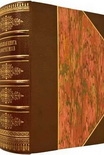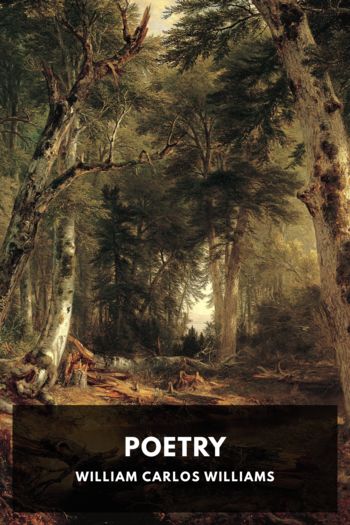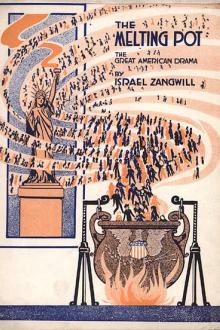No Modernism Without Lesbians, Diana Souhami [love books to read txt] 📗

- Author: Diana Souhami
Book online «No Modernism Without Lesbians, Diana Souhami [love books to read txt] 📗». Author Diana Souhami
the wide literary lesbian web
Natalie helped make Paris the sapphic centre of the Western world. Beyond a carousel of changing partners was the need for self-expression, a yearning for love, and a determination to be free. Tolstoy’s view in Anna Karenina that if there are as many minds as there are people, then there are as many kinds of love as there are hearts, resonated for lesbians who made their way to Paris. Expression of their love and interaction was disallowed in law. And so they wrote about themselves and each other, for themselves and each other. Their novels, poems and stories became a coded conversation.
Vita Sackville-West and Violet Trefusis together wrote a novel about their love affair. They variously gave it the title ‘Rebellion’, ‘Endeavour’ and ‘Challenge’. Conformity won the day. Vita’s mother, Lady Sackville, fearful of gossip, paid off the printer’s costs and had the plates destroyed. ‘If VT was a man I could understand,’ she wrote in her diary. ‘But for a woman, such a love beats me.’ ‘I hope Mama is pleased’, was Vita’s response, ‘she has beaten me.’
‘These Sapphists love women; friendship is never untinged with amorosity,’ Virginia Woolf wrote in her diary in December 1925. She did not view herself as one of ‘these Sapphists’. She described herself as ‘sexually cowardly’, and with ‘a terror of real life’. Her novel Orlando was her gift to Vita, with whom she was, in her way, in love. No scandal attached to it. Virginia Woolf wrote with a literary eloquence that defied censorship, though her inspiration was androgyny, lesbian love and the elopement of Vita with Violet. The book was published to critical acclaim in September 1928 and was in its third edition by December.
Retaliation came from Violet, banished to Paris and forced by her mother into a sham marriage. She was depicted in Orlando as the evil fox for whom English was ‘too frank and candid a tongue’. Her reprisal, Broderie anglaise, was a roman à clef in French that was candid, frank and scathing. Broderie anglaise, a kind of English needlework that decorates holes, became her metaphor for the hypocrisy of her mother, Vita and Virginia. Virginia was portrayed as Alexa, ‘an old maid’, ‘incomplete as a woman’, her bed ‘so small and shy’ you can scarcely find it in the bedroom. Her hair was thin (Vita often talked of Violet’s ‘truly beautiful hair’). Everything about Alexa was cerebral: she had beautiful hands but was too thin, uninterested in food, wore dowdy clothes, was ‘very Oxford’. A fifteenth-century Flemish painter would, Violet wrote, have ‘portrayed her with a caged goldfinch and a carnation spotted with dew’.
Publication of Orlando coincided with the censorship for obscenity of Radclyffe Hall’s Well of Loneliness. Virginia Woolf offered to testify in court in defence of The Well, though she thought it a ‘meritorious dull book’ and was relieved not to be called. Radclyffe Hall viewed her own sexual orientation as tragic. She called herself and Stephen Gordon, the hero of her book, ‘congenital sexual inverts’, using Havelock Ellis’s terminology. His textbooks about such matters were also censored.
Natalie figured in The Well as Valérie Seymour, ‘a kind of lighthouse in a storm-swept ocean’ who in Paris gave courage to her dismal sisters in their tragedy of inversion.
Natalie as a real or fictional lesbian appeared in many of the poems, novels and memoirs of her friends and lovers: Liane de Pougy’s Idylle Saphique, the poetry of Renée Vivien and Olive Custance, the landmark Well of Loneliness. Lucie Delarue-Mardrus, in her novel L’Ange et les Pervers (‘The Angel and the Perverts’, portrayed her as a wealthy manipulative lesbian who lived for seduction:
perverse, dissolute, self-centred, unfair, stubborn, sometimes miserly, often play-acting, irritating most of the time, a monster – but a true revolutionary who inspires others to rebel.
Djuna Barnes and Ladies Almanack
Djuna Barnes wrote Ladies Almanack at Natalie’s suggestion in the year Orlando was published and The Well banned. Organized according to the months of the year and illustrated with twenty-two pen and ink drawings, it was a bawdy satire on lesbians in Natalie’s circle.
Djuna Barnes © Oscar White / Getty Images
In 1917, in ‘The Mark on the Wall’, Virginia Woolf wrote of how Whitaker’s Almanack encapsulated patriarchal rule. Published annually in the United Kingdom from 1868, it was a trove of data, facts and figures about governments, rulers, kings and occasions.
Djuna Barnes’s Almanack was designed as a manual for lesbians who ‘discard Duster, Offspring and Spouse’. Constructed like a medieval calendar with monthly entries and zodiac signs that corresponded to some aspect of desire – the ‘twining thigh’, the ‘seeking arm’, the language was a mix of flowery Elizabethan and colloquial English with much use of capital letters, neologisms, cryptic allusions and filthy jokes. It was irreligious and subversive, a raucous lampoon, hilarious to those who knew the references.
Natalie, the central character, was Dame Evangeline Musset, a lesbian pope, whose desires were infinite and bed never empty. (Colette’s lover, Missy, had termed Natalie ‘the Pope of Lesbos’.) Dolly Wilde featured as Doll Furious or Doll on her Arm, or ‘my great big beautiful bedridden Doll’.
‘And’ said Dame Musset, rising in Bed, ‘that’s all
there is and there is no more.’
‘But oh!’ cried Doll.
‘Down Woman,’ said Dame Musset in her friendliest,
‘there may be a mustard seed!’
‘A grain, a grain!’ lamented Doll.
Janet Flanner and Solita Solano were Nip and Tuck, journalists hampered by censorship restrictions. Nip cannot publish anything about Dame Musset and her minions. Una Troubridge was Lady Buck-and-Balk, who sported a monocle and communicated with spirits. Radclyffe Hall was Tilly Tweed-in-Blood who ‘sported a Stetson and believed in Marriage’ but only between women. ‘One was to be a wife the other a bride.’ Mimi Franchetti was Señorita Fly-About. Lily de Gramont was the Duchesse Clitoressa of Natescourt who often ‘took tea’ with the Dame. Romaine, Dame Musset’s final choice in love, was





Comments (0)